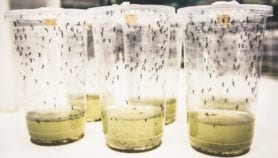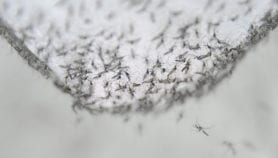Send to a friend
The details you provide on this page will not be used to send unsolicited email, and will not be sold to a 3rd party. See privacy policy.
[KATHMANDU] Researchers in Nepal report that five plant extracts have the potential to protect potato crops from a devastating fungus.
Led by B.L. Maharjan from the central department of microbiology at Tribhuvan University, Kathmandu, the researchers tested seeds of black mustard (Brassica nigra), ripened fruits of camphor (Cinnamomum camphora), chinaberry tree (Melia azedaraca, twigs of a common weed Lantana (Lantana camera) and eupatorium (Eupatorium adenophorum) against the fungus Phytophthora infestans.
Their findings were reported in the December 2010 edition of the Nepal Journal of Science and Technology.
Following fungal infection, blight appears on the leaves and progresses until the leaves die, resulting in crop failure.
Maharjan’s team loaded powdered extract from plant parts onto plates containing fungus-infected potato leaves. After five days they found that all could halt fungus growth.
Yubak Dhoj G.C., director of plant protection at the ministry of agriculture and cooperatives, told SciDev.Net that farmers traditionally use crude extracts of local plants, mixed and fermented with cattle urine, for crop spraying.
But scientists have not validated traditional plant-based pesticides so far and, in the absence of government policy on botanical pesticides, they are not produced on a commercial scale.
The cost of anti-fungal chemicals such as dithane accounts for 25-30 per cent of total crop input, said Krishna Sapkota, a farmer in the Lamjung district of western Nepal.
Link to abstract in the Nepal Journal of Science and Technology













